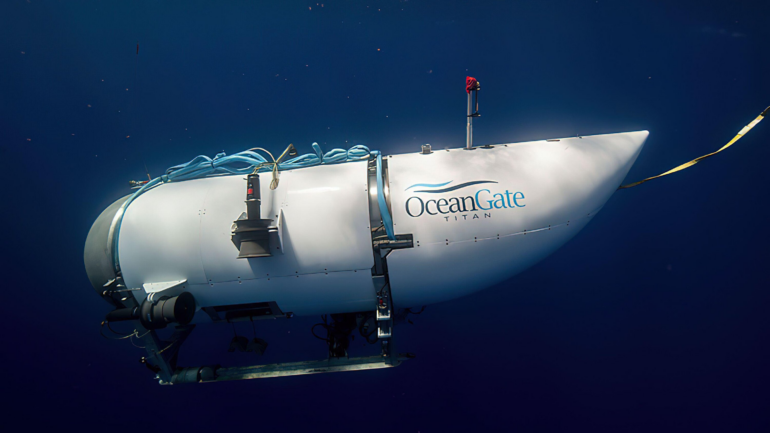The search for a missing submersible near the Titanic wreckage site is ongoing, with multiple countries and organizations involved in the rescue operation.
The 21-foot submersible, operated by OceanGate Expeditions, initiated its descent on Sunday as part of an exploration mission of the Titanic Wreck. Unfortunately, authorities reported that contact with the surface was lost less than two hours after the submersible submerged.
Among the passengers on board the missing submersible are Pakistani businessman Shahzada Dawood and his son, Suleman. Their family stated that they had embarked on the journey to visit the remnants of the Titanic shipwreck. Shahzada Dawood is the vice chairman of Engro Corporation, one of Pakistan’s largest conglomerates.
British businessman Hamish Harding, known for his aviation business, is also among the passengers. OceanGate Expeditions, the company responsible for the submersible, reported a loss of communication with the vessel while it was exploring the Titanic wreck site. The company’s focus is on the well-being of the crew, and efforts are being made to bring them back safely.
Time is of the essence in the search and rescue operation, as the submersible has a limited oxygen supply for its crew of five. Rear Admiral John Mauger of the US Coast Guard expressed the urgency of the situation, stating that the vessel still had approximately 70 hours of remaining oxygen on Monday afternoon.
“The Polar Prince research ship and a US Air National Guard unit, referred to as @Rescue106, are conducting surface searches throughout the evening, according to a tweet of the US Coast Gaurd.
Canadian aircraft, which have been scanning beneath the surface using buoys, will continue the search on Tuesday morning.
France’s maritime ministry has announced that its oceanographic institute is sending the vessel Atalante, equipped with a deep-sea underwater robot, to assist in locating the submersible.
The Atalante, currently on a mission for the French Research Institute for Exploitation of the Sea, is expected to arrive in the area on Wednesday. Experts from the French port of Toulon will operate the robot for its dive.
The Titanic sank in 1912 during its maiden voyage, resulting in the loss of more than 1,500 lives. The wreckage, located 400 miles off the coast of Newfoundland, Canada, at a depth of 13,000 feet, continues to fascinate nautical experts and underwater enthusiasts.
Alistair Greig, a professor of marine engineering at University College London, suggested possible theories based on images of the submersible. He proposed that if it encountered electrical or communications issues, it may have surfaced and remained floating. However, if the pressure hull was compromised, the prognosis would not be promising.
Efforts to reestablish contact with the submersible have received extensive assistance from government agencies and deep-sea companies. The challenging nature of deep-sea exploration underscores the urgency of the situation, as the clock is ticking for the crew and the submersible.
The search for the missing submersible near the Titanic wreckage site continues, with hopes of a swift and safe rescue of the crew members.



